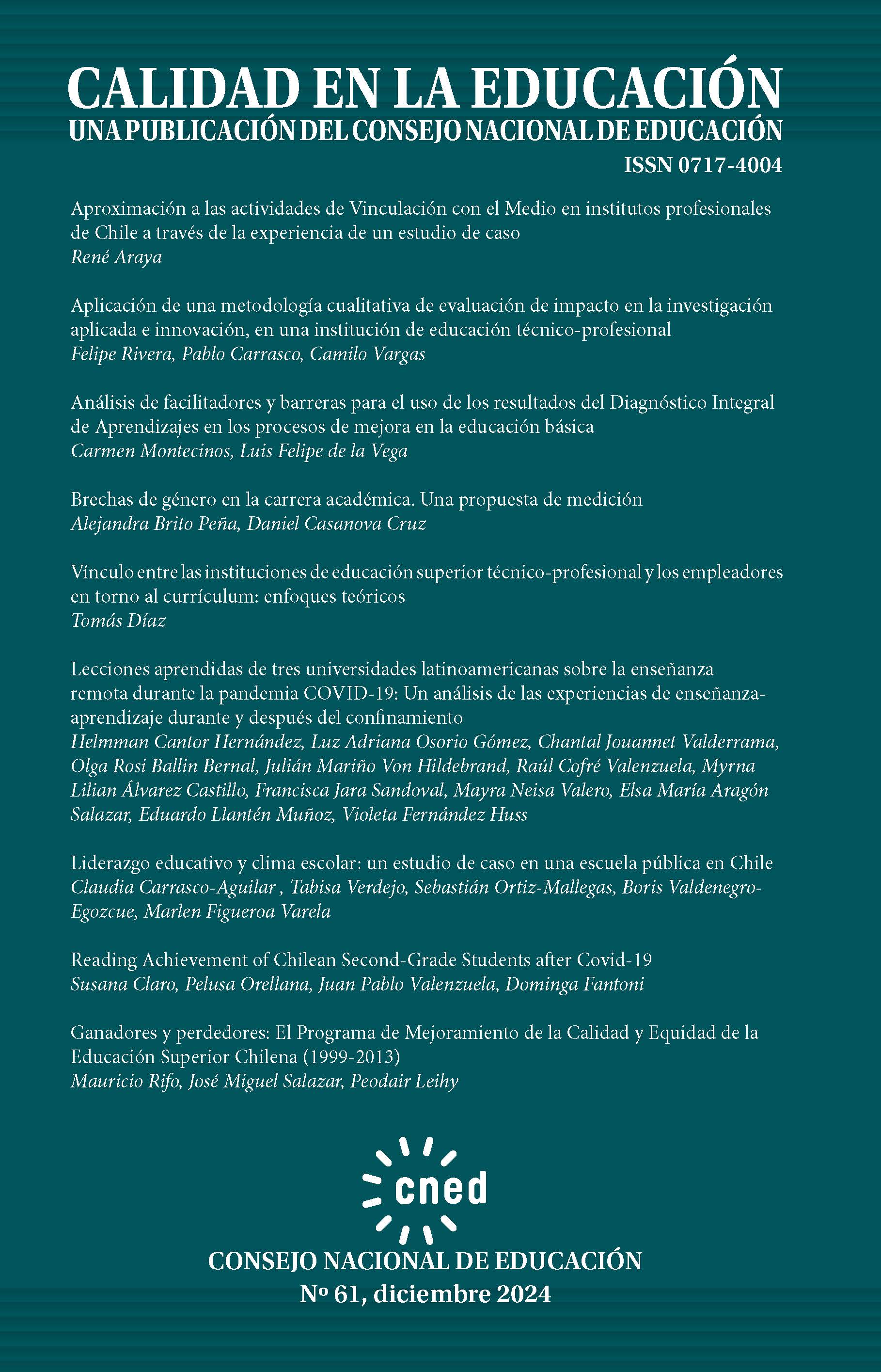Analysis of Facilitators and Barriers to using Comprehensive Learning Assessment Results for Improvement Processes in Elementary Schools
DOI:
https://doi.org/10.31619/caledu.n61.1496Keywords:
External Formative Assessment, Data Literacy, Elementary Education, School LeadershipAbstract
The primary objective of the research reported in this article was to explore the perceptions and practices of school principals, head of technical-pedagogical units, and lower elementary teachers regarding the uses of DIA in the academic domain. Using a mixed-methods sequential explanatory design, the first administered a survey in 20 schools, involving 80 lower elementary teachers and 40 senior leaders. In the second phase, in-depth interviews and observations were conducted in three schools selected based on the quantitative results. Findings indicate that DIA tests are widely used in academic settings, and are generally perceived as highly valuable. Teachers utilize test results to identify students needing additional support and to inform curriculum planning. Despite significant variation in implementation, a common limitation is the absence of protocols for reflective data use. Key Facilitators include collaboration between teachers and special education teachers, as well as guidance from the school leaders. However, most teachers report a lack of training in data literacy , and insufficient resources for supporting students in need, along with limited time for reflective use of data. While the sample size is small, these findings suggest potential modifications to the DIA to better align with the taught curriculum and highlight the need for professional development to enhance educator’s data literacy.
Downloads
Published
Issue
Section
License

This work is licensed under a Creative Commons Attribution 4.0 International License.
Authors retain their Copyright and only transfer a part of these to the journal, accepting the following conditions:
Authors keep their rights as authors and guarantee the right to the journal for the first publication of their work, which is simultaneously subject to the Creative Commons Attribution license allowing third parties to share the study accrediting the author and first publication in this journal.
Authors may adopt other non-exclusive license agreements for distribution of the version of the published work (e.g. inclusion in an institutional thematic file or publication in a monographic volume) accrediting initial publication in this journal.
Authors are allowed and recommended to share their work over the Internet (e.g. in institutional telematic files or their website) before and during the submission process, which may lead to interesting exchanges and increased citation of the published work. (See The effect of open access).

